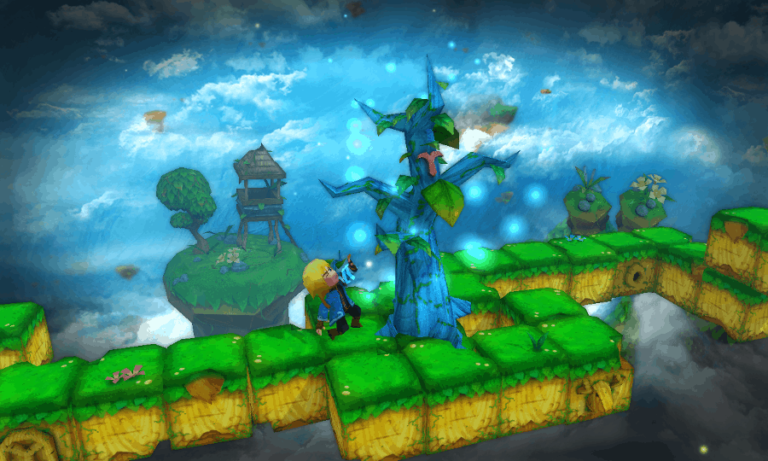Almightree: The Last Dreamer – What We Think
Almightree: The Last Dreamer by Chocoarts makes a heck of a first impression. When you start the game you’re greeted with vibrant, floating platforms in the sky with fantastical music in the background. It looks great and reminded me of Bastion, which had a similar look with its blocky sky platforms. The game immediately thrusts you into its setting with an engaging opening cut scene.
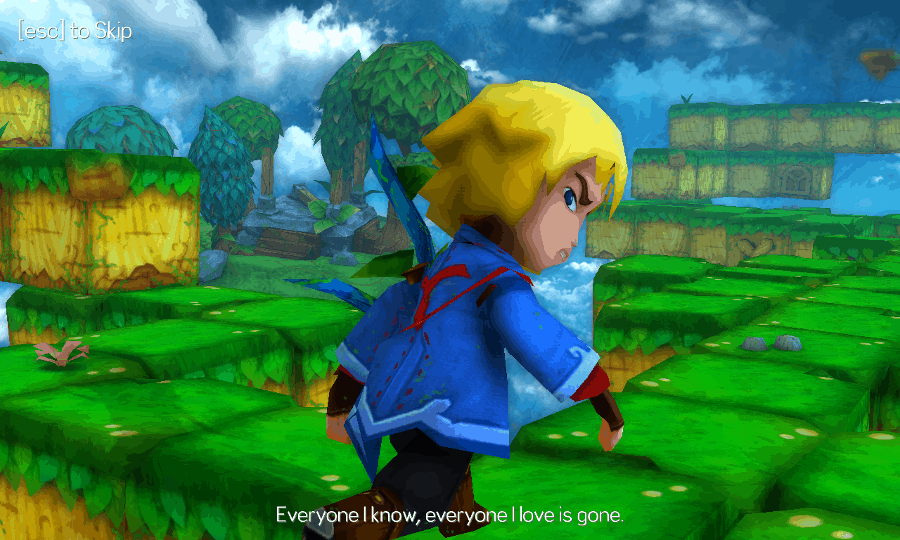
Starting the game, you find out that your crumbling world and everyone you knew is disappearing. You are alone and trying to escape it. You find out that you have the unique ability to commune with nature, allowing you to resurrect tree saplings and make them grow – all in an effort to help heal your diminishing homeworld. The narrative set-up is well executed and really sets the tone early on.
Out On a Limb
This narrative, however, is short-lived. Over the course of the rest of the game, you get no more story besides that initial set-up. Will I find a way to help the world? Are my efforts going to waste? Who am I? Nothing gets answered, and it’s unfortunate. I would have liked more narrative that elaborated on the established story set-up. What made games like Bastion so great were the fact that there was narrative intertwined with its gameplay. If a game like Portal had a great set-up but didn’t elaborate on its narrative more, then it would have felt more vapid.
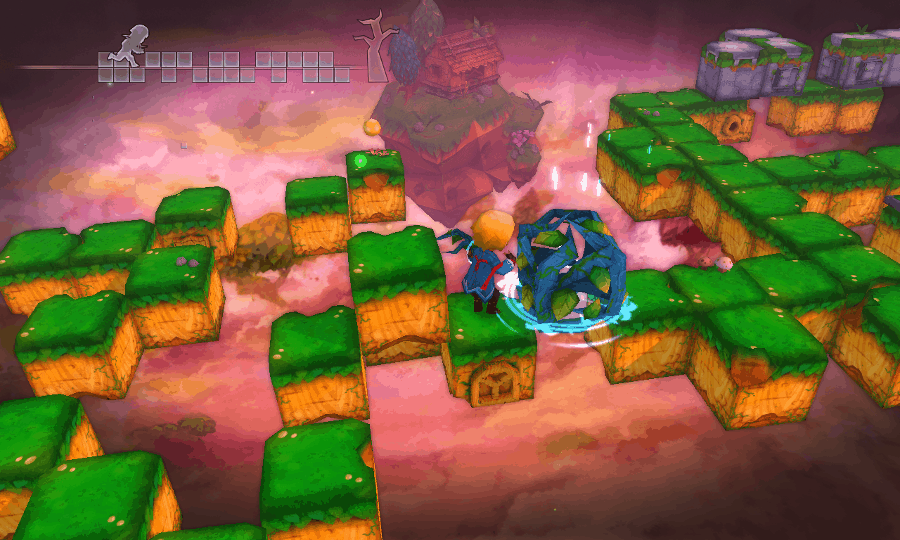
Thankfully, the gameplay doesn’t feel as empty. This third person puzzle game is similar to games like Pushmo or Catherine thanks to its grid-based terrain and block-rearranging mechanic. The goal of the game is to get to a tree sapling at the end of each level. In order to get to that sapling, you must avoid obstacles like sharp thorns, electrified plants and firing canons. The only ability you have in the game that helps you avoid traps and get through obstacles is your block-transporting ability. Your character can transport a block directly in front of him into another empty spot to create bridges or ladders to get to higher terrain.
Up So Floating Many Blocks Down
While all that is happening, the levels start to crumble behind you. This provides a constant tension to find your way to the end as quickly as possible to avoid dying; the blocks beneath you fall down if you dawdle. The game mechanic works well enough, as the tension adds the right amount of panic to the player without being too unforgiving.
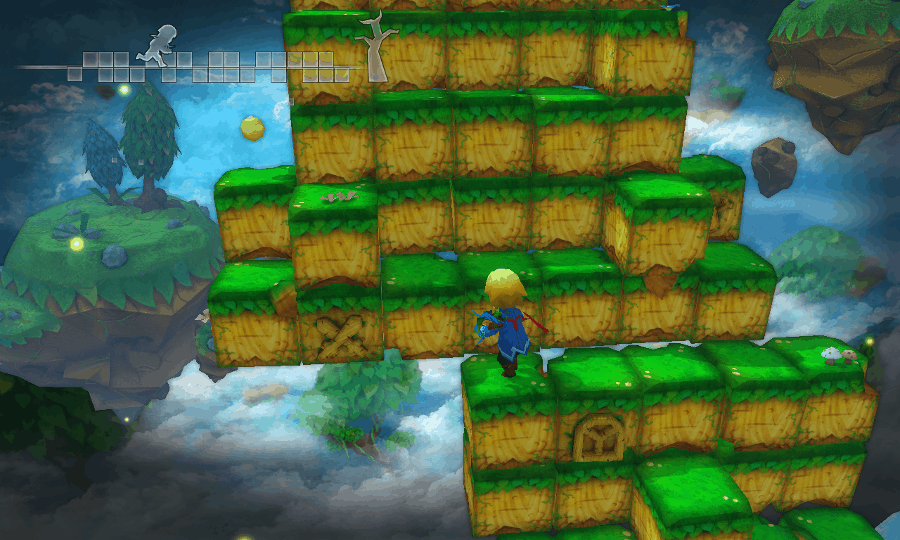
Levels themselves follow a linear path, but the way in which you can conquer obstacles feels more dynamic. Your transporting block ability is a little freeing, thanks to the fact that most of the time there are multiple ways to get through obstacles – for example, stacking blocks on one side as opposed to the other. It’s not as dynamic as I would have liked, but it still feels like levels are not strictly bound to one solution.
Levels Don’t Fall Far From The Tree
Levels, for the most part, don’t change up much. You’ll go through similar looking and similar feeling levels. There is only so much the game does, and honestly it feels like it doesn’t do enough. The game throws only a finite number of obstacles at you, and they are rarely combined together to make levels more challenging. Granted, the game consists of 20 short levels, but it’s still an issue. The whole game ends up feeling less engaging and more repetitive because of that lack of challenge.
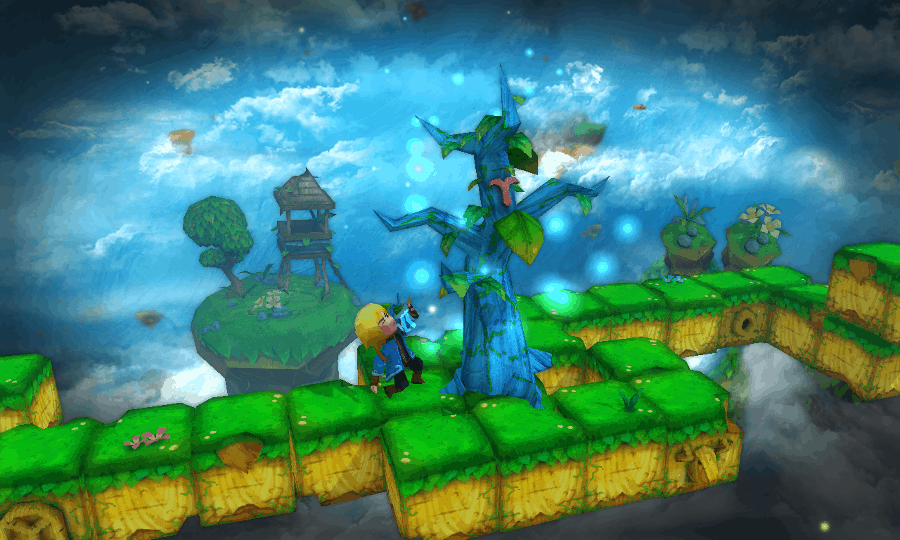
The lack of progressing difficulty will turn some people off. Levels stay at around the same difficulty throughout, which is fine if that’s not a problem for you. The game tries to make things more challenging by offering three game difficulty levels, but they don’t change the way levels are constructed. Without that uphill difficulty climb, I think most puzzle game enthusiasts will end up feeling bored.
Rudimentree
Almightree: The Last Dreamer is a mediocre game that had lot of potential. It has a good main mechanic, nice visuals and varied level obstacles that feel underutilized. Its beginning narrative hook kept me engaged early on, and if it continued to elaborate on that narrative, it would have helped me get through its repetitive level design. If you want a puzzle game that doesn’t offer much challenge, you should give this game a shot, but if you’re looking for a rewarding puzzle game, I’d suggest you look elsewhere.
Watch the trailer for Almightree: The Last Dreamer:

